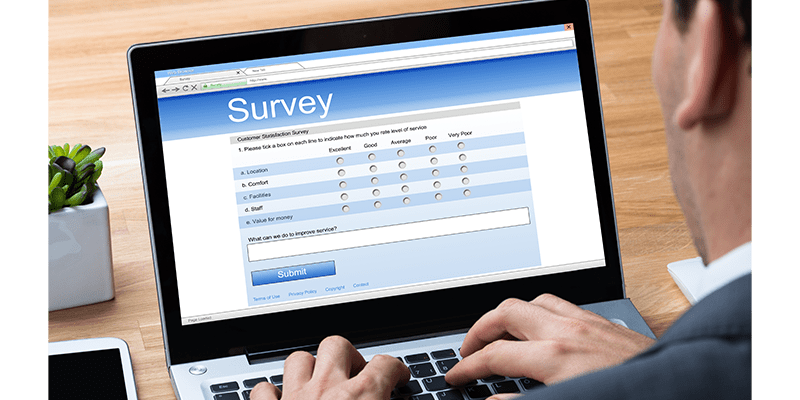Marketing
The Hidden Benefits of Clean Data You Need to Know
by Lenke Harmath

From data chaos to data-driven results
Clean and complete data is the cornerstone for effective revenue generation. Practically everybody – including business leaders, marketers and sales professionals – agree that quality data is the mandatory building block of planning and executing any strategy or tactic. For your business to succeed, having actionable analytical insights relies heavily on clean and structured data, that can be converted into a strategic direction on how to work with your data to get you to where you need to be. Clean data is fundamental to obtaining the answers to questions such as exactly which contacts are missing important data fields or which channels drive the most conversions.
Even large organizations often lack the time and/or skilled resources required to sift through and analyze large quantities of data. This can be even more overwhelming for SMBs who most likely will not have the manpower or assets to fully inspect their data. Duplicate records in your CRM, marketing lists with missing contacts or the lack of standardized field data entry can cause a lot of headaches and are highly likely to have a potentially negative impact on revenue. But all is not lost, as a specialist in marketing data and we are happy to discuss your priorities and guide you through the data cleansing and utilizing process.
An in-depth dive
The three core data entities in Dynamics 365 Sales are lead, contact and account. By focusing on the depth and quality of these data elements, quantifiable improvements in your communications and engagement programs can be achieved. B2B marketers care about optimizing lead generation, improving conversion rates, and driving more revenue – all of which is achievable relying on good quality data.
How can a company become data-driven and rely on good quality data? Since it’s a strategically important change, it has to be a top-down approach. Becoming a truly data-driven company often requires a shift in company culture. The onus is on leadership to create a culture that emphasizes the need for clean data and values the investment required to build and maintain a central storage repository. Data has to be housed in a single repository, have a consistent structure and be readily accessible. This means any stakeholders with the need to access data relevant for their role can easily do so and are enabled to make informed decisions based on a consistent dataset.
Did you know that at any given time, the average B2B database is 25% inaccurate? Learn more about how ‘dirty data’ could be affecting your business with this infographic.
Organizations that value clean and coherent data early on and treat it as a priority are establishing a solid foundation which can be the catalyst for trickle down benefits across the company.
Even if it sounds simple, it’s not always so straightforward to achieve. Although most business leaders are aware of the importance of quality data, there seems to be a disparity between what executives “want” and “have”. An IDC survey sponsored by Tableau found that 83% of CEOs want a data-driven organization, but only 33% of executives are comfortable questioning business KPIs and metrics.
*n=1,100 across 10 countries, including technical and non-technical leaders
The good news is this research reveals that investing in data-driven behaviors often translates into measurable, positive impact and business performance with impressive metrics:
Is one of your many hats “Data Analyst”?
For many of us, regardless of our role within the company, we frequently wear the hat of Data Analyst and find ourselves cleaning up data even before our “real work” can get underway. This manual organization of data (aka “data wrangling”) has many companies contemplating automation and various solutions to reduce manual tasks – and in turn minimize the potential for human error.
When building your demand generation strategy to drive value keep in mind that bad data can inadvertently fuel equally bad decisions. This can occur in any industry, department, or across a wide range of job titles. Before automating processes in your marketing automation solution, you need to guarantee that the data is correct.
The true cost of doing nothing
Any savings a company thinks is gained by postponing a data audit, updating data hygiene processes or implementing proactive data quality measures could be short term at best.
As with many aspects of digital marketing, the old adage of “Garbage in, garbage out” applies. The quality of insights or analysis coming out of a system can never be better than the quality of information that was put in. Data quality must meet a company’s growth initiatives, otherwise, the organization’s potential to meet its objectives is at risk.
Do you feel confident in the quality of your organization’s customer data in Microsoft Dynamics? If your company is like many others today, you may place your level of confidence in it somewhere between “not at all” and “it depends.” Based on some common issues we frequently hear from customers we designed a Data Assessment engagement:
“Our Microsoft Dynamics data – specifically Contacts, Leads and Accounts – is messy.”
“We don’t even know where to start to clean our data up.“
“We know there’s a problem but we keep putting it off.”
“We’re dreaming of some magic tricks to solve it once for all.”
Although organizations are generally aware of their dirty data – data that is incorrect, incomplete or inconsistent – cleaning up that data can be an overwhelming project. We can help you stop procrastinating and start making tangible progress in making your data work for you.
Some people consider the cost of doing nothing is… free. Frankly, those people are wrong when it comes to most data issues. When left unattended, data issues grow exponentially like a rolling snowball. There’s no time like the present to get started.









